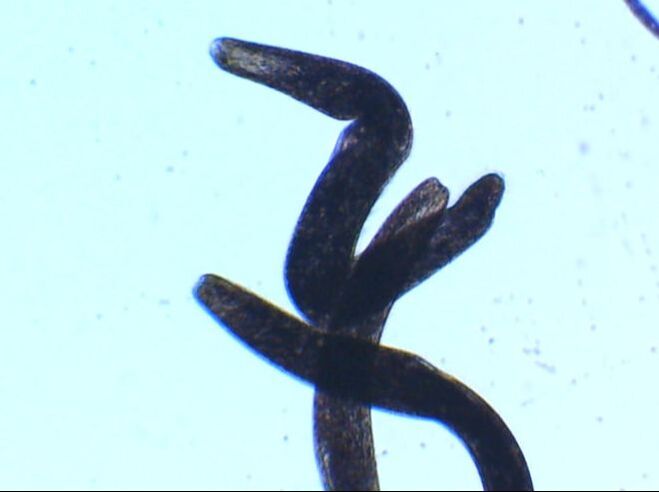|
The genus Spirostomum contains some of the largest Ciliates. Some can grow to to a size of more than 4 millimeters, so it can sometimes be seen without the help of a microscope.
When observed swimming in a little jar of pond water it looks like a little worm. Only with the help of a microscope you can see that it is a ciliate. It is totally covered with hair-like 'cilia'. One of the cool things about the Spirostomum is the way it can contract. The organism can contract it's body to 1/4 of it's length in 6-8 milliseconds which is the fastest contraction known in any living cell. Like many large single celled organisms, it does not have just one nucleus. It has many. The nuclei form a long strand, like a string of pearls, visible as the lighter structure in the right image. Spirostomum, like many ciliates, feeds on bacteria. They are swept into the mouth opening with a row of specialized fused cilia. The mouth opening is very small and can be found on the side of the body.* |
|
*Information from: Spirostomum: The fastest contraction in the microworld; by Wim van Egmond; (http://www.microscopy-uk.org.uk/mag/indexmag.html?http://www.microscopy-uk.org.uk/mag/artoct98/spiro.html)

